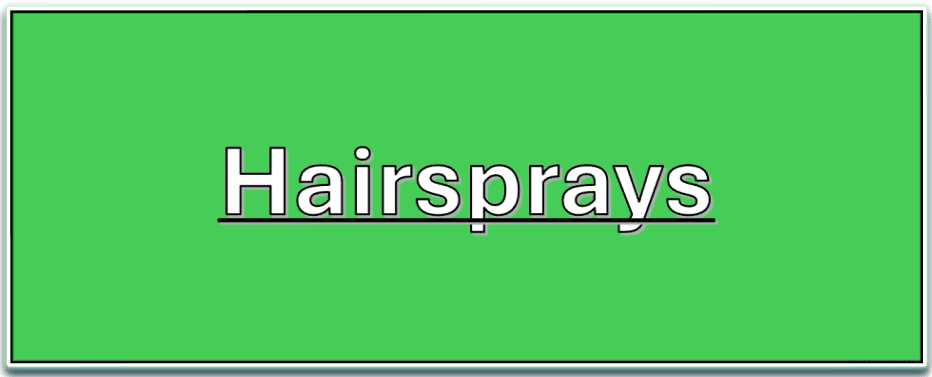Surface active properties of non-ionic surfactants
Surface tension
The surface tension of non-ionic surfactants decreases with increasing concentration in a similar manner to all surfactants but the minimum surface tension obtained increases as the degree of ethoxylation increases, i.e. the lowest water solubility gives the lowest surface tension.
Micelles
The size of the micelle for non-ionics is very much larger than that for anionics or cationics.
Critical micelle concentration (CMC)
In general the CMCs for ethoxylated products are much lower than for ionic materials of similar activity being of the order of 10-4 mol/litre. Factors affecting the CMC are:
- The effect of varying ethylene oxide content:
The CMC obviously increases with increasing degree of ethoxylation, but when the molar concentration is calculated, the effect is not so pronounced (Table 1).
- The effect of temperature:
The CMC decreases with increasing temperature, the molecule becoming more insoluble (dehydration of the polyoxyethylene chain) and thus becoming more surface active. For anionics the CMC increases with an increase in temperature because the molecule becomes more soluble and hence less surface active. What is more important is that the aggregation number or size of the micelle increases rapidly with temperatures near the cloud point. Thus the micelle is considerably larger to solubilize other products. At or near the cloud point the size of the micelle becomes so large that it is visible, i.e. the non-ionic comes out of solution. Thus non-ionics are most efficient at solubilization near the cloud point.
- The effect of added inorganic salts:
In general, added inorganic salts will result in a decrease in CMC being more dependent on the anion than the cation.
- The effect of added polar solvents:
If a polar solvent (e.g. ethyl alcohol) is added to lauryl alcohol ethoxylates, micelle formation no longer occurs above 25% alcohol (sodium lauryl sulfate micelles vanish at about 40% ethanol in water).
- The effect of side groups in the hydrophobic chain:
Increases the CMC compared to linear chain due to inhibition of micelle formation by the bulky side groups.
| Product | CMC (mol/litre) | Molecular weight | CMC (%) |
| NP+4EO | 29.5 x 10-6 | 380 | 0.0011 |
| NP+5EO | 61 x 10-6 | 424 | 0.0026 |
| NP+6EO | 61 x 10-6 | 468 | 0.0028 |
| NP+7EO | 70 x 10-6 | 512 | 0.0035 |
| NP+8EO | 44 x 10-6 | 556 | 0.0025 |
| NP+9EO | 67 x 10-6 | 600 | 0.0046 |
| NP+10EO | 68 x 10-6 | 644 | 0.0044 |
| NP+20EO | 79 x 10-6 | 1113 | 0.0088 |
Table 1: CMC and degree of ethoxylation
Functional properties
General
Excellent detergents; poor foaming properties (this does not mean that they cannot create and/or stabilize foam in the presence of other surfactants); poor wetting; good emulsification; do not adsorb on charged surfaces.
Wetting
For aqueous solution, HLB value approx. 7-9 is the optimum (Table 2). The wetting times of the best were in the order shown in Table 2, i.e. C8 + 2 EO the best and C18 + 10 EO the worst. Addition of electrolytes generally reduces the wetting power.
| Product | EO content for optimum wetting |
| C8 alcohol | 2EO |
| C10 alcohol | 6EO |
| C16 alcohol | 9EO |
| C18 alcohol | 10EO |
Table 2: Wetting and EO content
Foaming
As a class, non-ionics are moderate to low foamers but at the optimum EO content and at their optimum temperature for foaming they are nearly as good as LABS (Table 3). The data in Table 3 are the result of experience and looking at various published works. The exact composition of some samples are not known and the temperature of the test is not always given. Therefore these results should be treated with caution but they do illustrate the very different results obtained with different tests for foaming.
| Product | EO content for optimum (at 25°C) | |
| Foam height | Foam stability | |
| C8 saturated alcohol | 15 | 4 |
| C12 saturated alcohol | 8-12 | 4-10 |
| C16 saturated alcohol | 20 | 4-8 |
| C18 saturated alcohol | 15-20 | 4-10 |
| Nonyl phenol | 25 | 5-6 |
Table 3: Foaming and EO content
Non-ionic surfactants can be defoamers when they are practically insoluble (i.e. at or above their cloud point) in the system but are more often employed as foam stabilizers for anionics, e.g. alkanolamides. Foam stabilizers are soluble in the system so a foam stabilizer for LABS at room temperature would be a C12 alcohol + 8-10 EO. LABS could be defoamed with a EO/PO co-polymer containing sufficient PO that the product is just insoluble at the temperature of use.
Solubilization
Solubilization is the dissolving of a water-insoluble substance in an aqueous solution of a surfactant to form a clear homogeneous solution. solubilization takes place in the micelles and as non-ionics form micelles at concentrations appreciably lower than anionics or cationics, it would be expected that non-ionics would therefore solubilize organic compounds at lower concentrations than the charged species. In addition, the larger size of the non-ionic micelles together with the solubilizing property of the polyoxyethlene glycol chain as well as the hydrophobe would suggest that non-ionics should be very useful for solubilizing organic compounds in aqueous solution.
The solubilization end point for ionic surfactants can be detected by the formation of turbidity or an emulsion. This is not the case for non-ionics because it is difficult to differentiate between the limit of solubilization and the haze formed by depression of the cloud point. Thus much published data should be interpreted with suspicion. From the practical point, whether the limit of solubility is reached by cloud point or solubilization would not seem to matter. However the reason for the incompatibility needs to be understood. In general maximum solubilization is of the order of 1-3 moles of solubilize per mole of surfactant. Thus, do not expect a 0.1 % solution of a non-ionic to solubilize 25% of a hydrocarbon. Some generalizations as a guide for dilution (0.1-1 % surfactant solution) are:
• n-Hydrocarbons show least solubilization, decreasing with increasing length of the hydrocarbon chain
• Aromatic hydrocarbons show moderate solubilization
• Polar compounds, e.g. alcohols, amines, ketones, and fatty acids show the highest solubilization, decreasing with increase in molecular weight
• Mixed surfactant systems can show synergism
• solubilization is most effective with high HLB values (> 15)
For solubilization with concentrated solutions, the concept of a globular micelle surrounded by an aqueous phase is no longer valid and thus solubilization depends upon the structure of the surfactant in solution. For solubilization in non-aqueous solutions, surfactants form micelles in non-aqueous solutions. Thus, non-ionics which will dissolve in mineral oil can solubilize water or aqueous solutions in the mineral oil.
Emulsification
Emulsification is where the emulsion is an opaque white liquid with two distinct separate phases. Non-ionics have found wide use as emulsifying agents. In practice the most stable emulsions are often made by two or more surfactants of differing hydrophobic/hydrophilic properties (HLB). The addition of ethylene oxide in various proportions can provide such variations and the use of emulsification systems based on products with varying ethylene oxide content is the best practical way of choosing surfactants for any emulsification problem. The major systems in use are:
• Sorbitan esters and their ethoxylated derivatives
• Alkyl phenol ethoxylates
• Alcohol ethoxylates
• Fatty acid ethoxylates In each of these systems there are products of varying solubility from soluble in mineral oil to soluble in water, enabling both water in oil (W/O) and oil in water (O/W) to be made. Non-ionics are also less affected by the presence of electrolytes and pH changes in the water phase. For choice of emulsifier, see Table 4. There are many published lists of HLB values for non-ionics and the HLB value is an excellent way of indicating the degree of water or oil solubility of a product.
| HLB number | Application |
| 2-7 | Water in oil |
| 7-18 | Oil in water |
Table 4: Emulsification and HLB number
Dispersing properties
Non-ionics help to disperse organic or inorganic particles in aqueous or non-aqueous systems. They help in wetting out, reducing the work needed for dispersion, prevent aggregation of the particles and reduce flocculation and settling. Polymeric water-soluble compounds (e.g. starch, polyvinyl alcohol) are used for this purpose and the polyoxyethylene chain in the non-ionics behaves similarly.
Detergency
There is a very large volume of data on the optimum carbon chain length of the hydrophobe and the ethylene oxide content of non-ionics for detergency, much of it contradictory. The main problem is the test method and the other components in the detergent. Work on distilled fractions of ethoxylated dodecyl alcohol showed that whiteness retention and soil removal were optimized at different ethylene oxide levels, i.e. soil removal best at C12 alcohol + 7-8EO but whiteness retention best at C12 alcohol + 4-5EO. Thus the wide distribution of the ethoxylated non-ionics may be an advantage for practical detergency. On examining the published data on nonyl phenol ethoxylates, the optimum detergency for cotton would seem to be in the area of 8-10 moles of ethylene oxide. HLB values in the range 13-15 have been quoted as the optimum. Comparison of ethoxylated fatty acids, fatty acid amides, fatty alcohols and mercaptans showed that the C12 chain was the optimum hydrophobe chain length for all the products examined. However, other people have shown that optimum detergency is obtained with 50/50 mixtures of C14/C15 with EO content at 11 moles.
The type of soil has also a big effect on the efficiency of the detergent and non-ionics, in general, are more efficient in removing oily and organic dirt than inorganic or polar dirt. The effect of concentration is important with optimum concentration at 0.1 % or greater (particularly if the non-ionic is well below the cloud point). Note that this is several orders of magnitude above the CMC. The temperature is important with the maximum optimum detergency at or near the cloud point.
In practice non-ionics are usually used in blends with anionics for heavy-duty performance, with the anionics in the larger proportion. More recently, the amount of non-ionics has increased relative to the anionics for lower temperature washing powder detergents. In liquid detergents, the non-ionics are used at even higher concentrations.
References
- Fan, T.Y., Goff, V., Song, L., Fine, D.H., Arsenault, G.P. and Biemann, K. (1977). N-nitrosamine in cosmetics, lotions and shampoos, presented at the American Chemical Society Meeting, New Orleans, LA.
- Gerstein, T. (977) VS Patent 4,033,895 to Revlon.
- Henderson, G. and Newton, 1.M. (1966) Pharm. Acta. Helv. 41, 228.
- Henderson, G. and Newton, 1.M. (1969) Pharm. Acta. Helv. 44, 129.
- Hugo, W.B. and Newton, 1.M. (1963) J. Pharmacol. 15, 731.
- Kassem, T.M. (1984) Tenside Detergents 21(3), 144.
- Knaggs, E.A. (1965) Soap Chem. Specia/it;es 41, 64.
- Meguro, K., Veno, M. and Esumi, K. (1987) Nonionic Surfactants-Physical Chemistry, MarcelDekker, New York, p. 150.
- Milwidsky B. and Holtzmann, S. (1972) Effects of regular amides and superamides on the foaming and viscosity of detergents, presented at the VIth International Congress of Surface Active Substances, Zurich.
- Porter, M. R. (1993). Handbook of Surfactants, Springer Science, New York, p. 116.
- Nakagawa, T. (1967) In Nonionic Surfactants, ed. MJ. Schick, Marcel Dekker, New York, p. 599.
- Osipow, 0., Snell, F.D., Marra, D. and York, W.e. (1956) Ind. Eng. Chem. 48, 1462.
- Schick, MJ., ed. (1967) Nonionic Surfactants, Marcel Dekker, New York.
- Schmolka, I.R. (1977) J. Am. Oil Chem. Soc. 54, 110.
- Tagawa, T., lino, S., Sonoda, T. and Oba, N. (1962) Kogyo Kagaku Zasshi 65, 953; Chemical Abstracts 58, 680 (1963).






